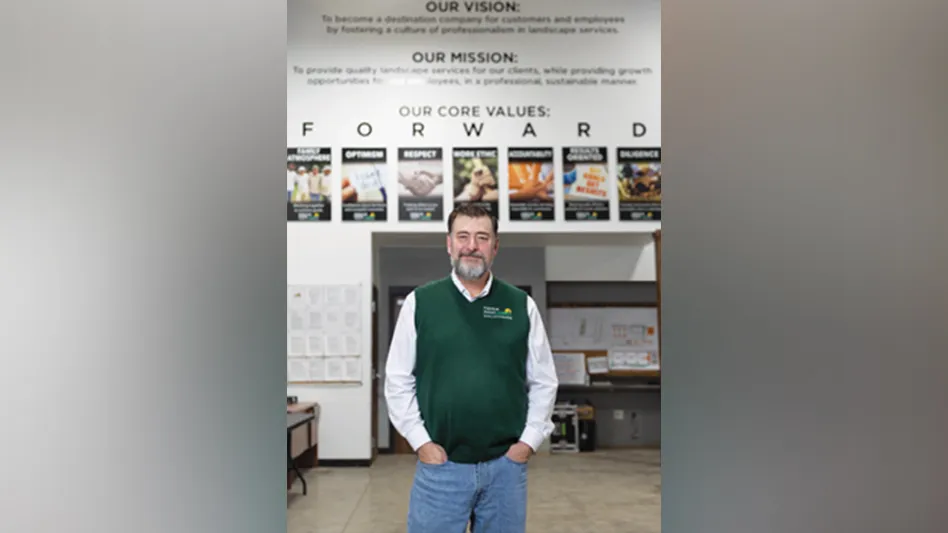Protect the investment that is your property. The landscaping and trees is your yard make up a significant portion of your property value. It is the first thing people see, and when you try to sell your home with less-than-stellar landscaping, the curb appeal is gone,” states Fran Lambert, co-owner of Mariposa Tree Service, based in Rancho Santa Fe, Calif. Family owned and operated for almost thirty years, Mariposa Tree Service is a trusted partner of Miramar Wholesale Nurseries (MWN) and is a member of the Professional Tree Care Association of San Diego.
With hurricanes ravaging many Southern U.S. states in 2005 and even torrential storms throughout Southern California created deadly mudslides and floods, both MWN and Mariposa Tree Service helped clean up damage, such as knocked over trees.
While there have been numerous accidents and damage, clean-up crews, landscapers and nurseries will be busier than ever in 2006, getting these areas prepared for a serene spring. And preparation also includes taking a number of preventive steps to prepare trees for any future storms.
RESILIENT TREES. If you take a quick drive around your neighborhood, you are bound to see one, if not more, trees cracked in half – resulting in damaged trees and road hazards. Trees are resilient by nature, and if damage occurs during a harsh winter, it is likely that a natural pruning process will be taken care of by Mother Nature. Wood debris are beneficial to the survival of the tree as it provides essential nutrients to be recycled for continued growth. A tree’s fate is determined by the amount of damage sustained. If it has lost less than 25 percent of the canopy, it will probably recover. However, many times new growth occurring after tree damage can result in weakened limb growth, uneven re-growth or unbalanced limb weight that will, once again, have the potential for breakage. Left untouched, many tree wounds can also invite bacterial or fungus damage later on. But if the main portion of the trunk has snapped in half, it will most likely need to be removed at a later date.
Pruning is considered a science, since it often requires special equipment and can be dangerous – both to the landscape contractor and the tree’s health. Encourage your clients to hire a professional certified in your state, since they will have the proper equipment and liability insurance to cover injuries suffered while repairing trees on your property.
MAINTAIN ORDER. Contractors should first tend to trees close to structures, and work their way out. Unless trees pose a hazard to roads or power lines, they can probably be left alone. As a general rule, no branch should be pruned without a reason. The recent storms creates the temptation to over prune, the objective of pruning should be limited to the removal of what is hazardous and structurally weak; the natural form of the tree should be maintained as much as possible.
Removal of a tree may be a consideration when the following occurs: the entire top is broken off or when one of the arms of a Y junction on the trunk has started to split. How a tree is pruned will greatly affect the growth form, vigor and stability of the tree. Two common types of pruning are thinning out and topping.
Thinning out is also known as selective cutting or drop-crotching. It involves complete removal of a branch back to the main stem, or to another lateral branch, or to the point of origin. With thinning out, the overall general shape of the tree is kept. Pruning wounds are closer to the stem and heal more rapidly. In addition, stimulation of new growth is distributed over many growing points.
Topping is a more severe type of pruning and consists of cutting the top of a tree in a “flat-top” or “snowball-cone” shape. With topping, effects will be far more negative. Numerous new shoots will develop rapidly, producing many fast-growing, succulent sprouts. The tree will appear bushy, and the new shoots will generally form more structurally weak junctures with the main branch of the limb. Branches will tend to angle up very closely to the tree trunk, producing weak crotches.
“If you cut down the foliage too much, the tree will use all of its energy reserves to regenerate the foliage,” Lambert explains. “This leaves little energy left to resist disease, and may also result in limbs that are weakly attached.”
Topping also reduces the number of leaves a tree has, limiting the trees’ ability to produce food energy through photosynthesis, which can result in the plant’s early death.
Because of the weather, most landscapers are in clean-up mode rather than prevention mode. By evaluating the planting climate, soil compatibility and tree species structure, your plant materials will be better apt to weather storms. Trees less than 30 feet often do well in high-traffic areas. Even if you choose the perfect plant for the perfect place, regular care and maintenance is important.
While the job of cleaning up after a storm is an enormous one, it is not necessary to do everything for your clients at once, even though they may demand it. By slowing down your clean-up activities and thinking before acting, you may actually save yourself and your clients a lot of hard work. When in doubt as to what is best for your customers’ trees, read up on pruning or consult a professional. With careful pruning and patience, you may discover just how resilient trees really are.
The author is a California Certified Nurseryman with more than 25 years of horticultural experience and managerial expertise. Miramar Wholesale Nurseries has facilities in San Diego, Irvine/Lake Forest and San Juan Capistrano, Calif. If you wish to subcontract tree services to a certified arborist, contact the American Society of Consulting Arborists at www.asca-consultants.org.

Explore the February 2006 Issue
Check out more from this issue and find you next story to read.





